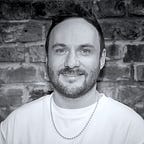Pillars of ProductOps
This week I was very kindly asked to be part of an amazing panel at the ProductOps Summit to discuss the pillars of ProductOps. The panel was hosted by Chris Butler of Cognizant and I was lucky enough to be alongside Victoria Wood of Shopify and Wafic El-Assi of Uber.
About the panel discussion: Going beyond definitions of the role, this panel will dive into the base principals and scope of the product ops. What are the key things that an organisation needs to look at when creating a product ops team?
Video recording can be found here: https://www.productledalliance.com/product-operations-summit-september-2021/?wchannelid=22usf7a8r2&wmediaid=bmktblata8
Tell us who you are and what your ProductOps animal is!
“I’m Chris a Product Operations Principal at Farfetch and my goal really is to help teams to build better products. This comes principally through process improvement, product development efficiency, increasing team capabilities and ensuring alignment across our business and technology functions. My animal would be a Meerkat! They’re very sociable animals and they work together to spot danger or problems and act upon them quickly!”
Is it crucial to Product Manager before you move to a Product Operations role?
“Well actually our ProductOps team is made up from people that all have a design background. My colleague Hugo Froes has actually just given a talk at the summit on how to apply UCD to ProductOps, this might give you an idea of how we view our work.
Having said that we do have a broad background across technology, project management, strategic consulting and change management. I think having this varied background combined with the empathy, problem solving and focus on customers that comes from being a designer is proving to be succesful for us.
In the future (yes we are hiring!) we are looking to find people to join our team that have different experiences — particularly in data analysis, Product Management and maybe traditional Operations Management. We value having diverse teams and people with different past experiences will only make our team stronger.”
How much does inconsistent definitions of ProductOps matter?
“We really focus on the “how” vs the “what”. Within that scope I think we have to be flexible with what we focus on, this could change month to month, but having our pillars in place help us to orientate back if we end up going down rabbit holes — of which there can be many!
I think this can be totally dependent on the need of the organisation at the time. To give you an example, when we first introduced the ProductOps team we were very much focused on the flow of work from discovery through to delivery. We were hoping to find any issues or problems across the product function, anywhere that we could improve or make more efficient.
Soon after with a change of organisational structure and a total revamp our our strategic planning process we found ourselves for the better part of the year very much focused on this transformation. Next year may be something different again as those pieces fall into place and the product function is more comfortable with changes that were introduced.
It can also be quite dependent on team size, we have a team of four that covers 45 product managers of various levels including leadership, in a product function that is over a 100 when research and design are included and maybe 600 when you include Engineering. We can only focus on the most pressing issues even if there are many other things trying to get our attention — we try not to be moths to the flame!”
What is the glue work inside our product orgs?
For the background on glue work: [video] Technical Leadership and “Glue Work” — Tanya Reilly
“I think we see a lot of our work as the ‘glue work’, we are essentially here to identify problems, remove blockers, ensure communication clarity, set documentation standards — all of this is to set the teams up for success. Sometimes that can be large strategic projects but it can also be the smaller more tactical changes that just make our product function more effective.
Highlighting that work can sometimes be a challenge. Having regular playbacks of our work, running health checks with teams and having the right measures in place allow us to prove to Product Leadership that we’re doing the right things. All of this contributes to our understanding of progress even when it may not always be obvious.
The measures we think about are mostly quantitative: do people feel more empowered, do they feel more efficient, do they feel confident knowing how the products are progressing and what the planning process is, are they able to focus more on customers and are they being more effective in meeting their needs. All these things can show that ProductOps work is succesful. It simply comes down to how we talk about this outside of the Ops team and promote ourselves.”
Farfetch ProductOps Pillars
- Product Practices
- Product Efficiency
- Raising Capability
Chris Compston, a Product Ops Coach & Consultant and creator of the Lean Capability Canvas — maximising the performance and impact of product teams. He has over a decade working in technology organisations. Enabling teams to build better products for their customers and the business.
